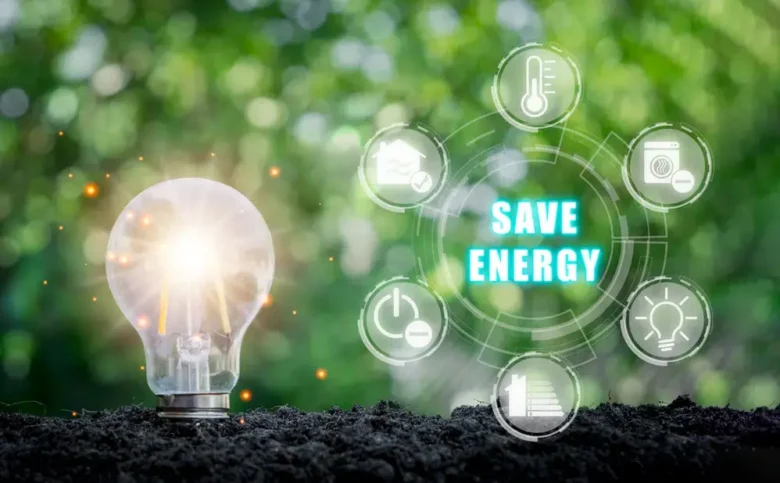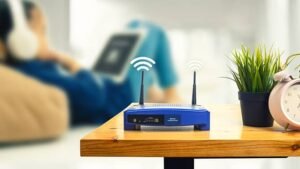In today’s society, where technology has become an integral part of our lives, managing energy consumption is more important than ever. With rising electricity costs and growing environmental awareness, saving energy is no longer just a beneficial idea; it’s essential. The good news is that smart technology can help you manage your energy consumption better than ever. Smart plugs, energy monitoring apps, and smart thermostats are just a few examples of how new technologies are changing the way we save energy.
This article offers practical, research-based recommendations for smart technology that will help you lower your energy bill without sacrificing comfort or convenience. Whether you own a home, rent, or run a business, these tips can help you live a more eco-friendly lifestyle while saving money.
Use a Smart Thermostat for Precise Temperature Control:
Smart thermostats are one of the best smart devices for saving energy. Traditional thermostats require you to manually adjust settings, which can waste energy if you forget to turn down the heat or air conditioning. Smart thermostats, like those from Google Nest or Ecobee, learn your daily habits and automatically adjust the temperature based on weather and activity. They can, for example, lower the temperature when you’re away and ensure your home is warm and comfortable when you return.
The U.S. Department of Energy states that lowering the temperature by 7 to 10 degrees Fahrenheit (2.7 to 3.1 degrees Celsius) per day can save up to 10% on heating and cooling costs annually. These devices can also be controlled remotely via a smartphone app, allowing you to view and change settings anytime, anywhere. The combination of motion sensors and AI learning ensures that unused rooms don’t waste energy, making them a wise long-term investment.
Smart Lighting Systems:
The average home uses about 15% of its electricity on lighting, so now is a good time to make changes. You can use smart lighting systems like Philips Hue or LIFX to program, dim, and automate the lighting in your home. Motion detection automatically turns off the lights when no one is in the room. Simple yet powerful. Smart LED bulbs use 75% less energy than regular incandescent bulbs and last 25 times longer. They’re also customizable. You can adjust the brightness or color temperature based on your mood or activity while saving energy at the same time.
By connecting these bulbs to virtual assistants like Alexa or Google Assistant, they become even more convenient with voice control. Special apps track your bulbs’ energy consumption in real time, giving you more insight into your usage and allowing you to make smarter adjustments. Smart lighting can significantly reduce your monthly energy bill while making your home more comfortable and stylish.
Prevent Phantom Power Loss with Smart Plugs:
Many electronic devices still consume a small amount of power when switched off. This is called “phantom power.” This hidden power can consume up to 10% of your total energy consumption. Smart plugs are a simple and effective way to address this problem. You can use a mobile app to monitor and control connected devices. You can set power-off functions for devices like coffee makers, chargers, and entertainment systems so they automatically switch off when not in use.
This can significantly save energy in the long run by, for example, switching off a game console or TV completely at night instead of leaving it in standby mode. More advanced smart plugs also provide detailed energy consumption information, allowing you to identify which devices in your home use the most energy. Many smart plug models integrate with a larger smart ecosystem, allowing you to simultaneously adjust your lighting and heating to save energy. This feature not only reduces energy waste but also gives you better insight into how each connected device affects your energy bill.
Install a Smart Energy Monitoring System:
When it comes to energy management, knowledge is power, and that’s never been truer. Smart energy monitors like Sense or Emporia connect directly to your meter box and provide real-time insight into your home’s electricity consumption. These devices show you which appliances are using the most power and when. You can identify problems by observing patterns, such as an old refrigerator running too often or an HVAC system cycling on and off too frequently. Many systems come with mobile apps that let you track energy consumption trends over days, weeks, or months.
This data provides you with the information you need to make informed decisions. Some systems even offer energy-saving methods. For example, you’ll receive notifications if an appliance is running longer than usual. Depending on how proactive you are in accessing information, installing a smart energy monitor can reduce your overall electricity consumption by 15-20%. This data-driven approach ensures that your energy-saving plans are based on facts, not guesswork.
Use Smart Appliances for Maximum Efficiency:
Smart appliances like dishwashers, washing machines, and refrigerators are designed to operate more efficiently while consuming less energy. They can adjust their operation based on energy consumption, water usage, and even changes in electricity prices. A smart washing machine, for example, can detect the load and type of laundry and adjust the water level and wash time to save electricity and water. Many smart appliances can also be controlled remotely, allowing you to run high-energy tasks during off-peak hours when electricity costs are lower.
Smart refrigerators also feature sensors that keep the cooling system running optimally and send alerts when maintenance is needed before performance is affected. These features not only reduce waste but also extend the lifespan of appliances. Energy Star indicates that switching to certified smart appliances can save you up to 30% on your electricity bill. The initial investment may seem significant, but the long-term savings and positive environmental impact make it a wise and future-proof investment.
Conclusion:
Ultimately, smart technology is no longer a luxury; it’s a necessity for an affordable and eco-friendly lifestyle. By integrating smart thermostats, lighting systems, outlets, energy monitors, and appliances into your daily life, you can significantly reduce your energy bills and save money. Most of these solutions are easy to install, adapt to your needs, and are user-friendly, so everyone can start saving money right away. Switching to smart energy management not only saves money; it also leads to a more efficient and environmentally friendly future. When you start using these technologies, you’ll find that saving energy doesn’t mean sacrificing comfort or convenience. It involves delegating tasks to technology, which leads to a cleaner, greener, and more energy-efficient home.
FAQs:
1. Which smart device can help you save the most energy?
A smart thermostat is generally considered the best choice because it automatically adjusts the temperature based on your schedule and preferences, saving you money on heating and cooling costs.
2. Is installing smart home devices difficult?
Most smart home devices are designed for DIY installation. Many come with easy-to-follow installation instructions and connect easily via Wi-Fi or Bluetooth.
3. Do smart plugs really help you save energy?
Yes. Smart plugs prevent appliances from losing power in standby mode, saving you up to 10% on your energy bill.
4. How can smart lighting systems help you save money?
Smart lighting systems save energy through automation, motion sensors, and dimming functions. Smart LED lighting can save you even more.
5. Is it worth buying smart home appliances?
Of course it’s worth it. Smart appliances are initially pricier, but they use less energy and can save you significantly on your energy bill in the long run.




